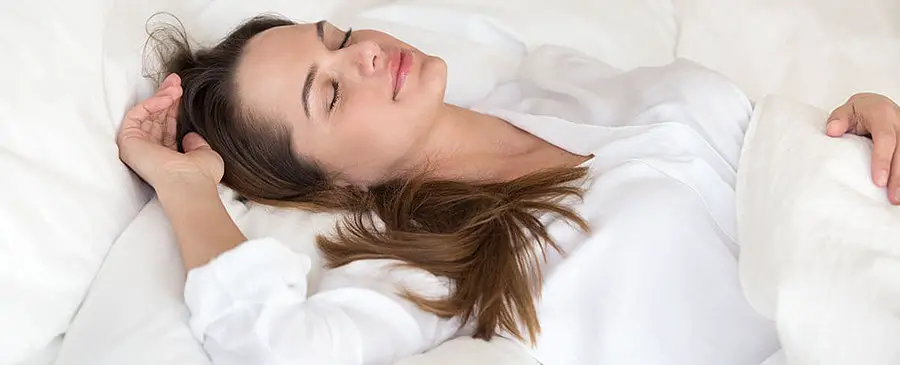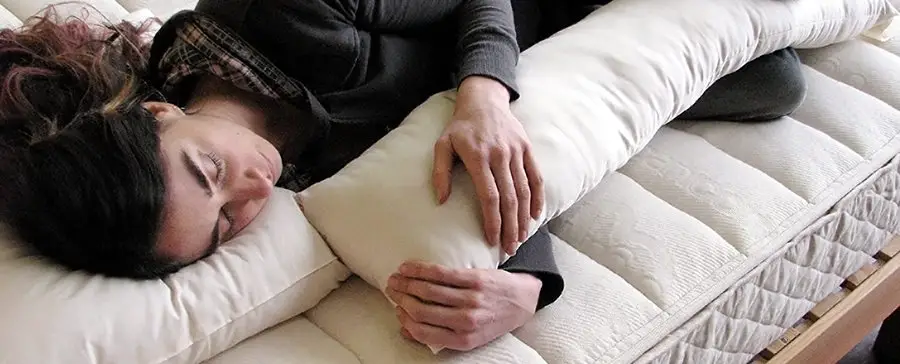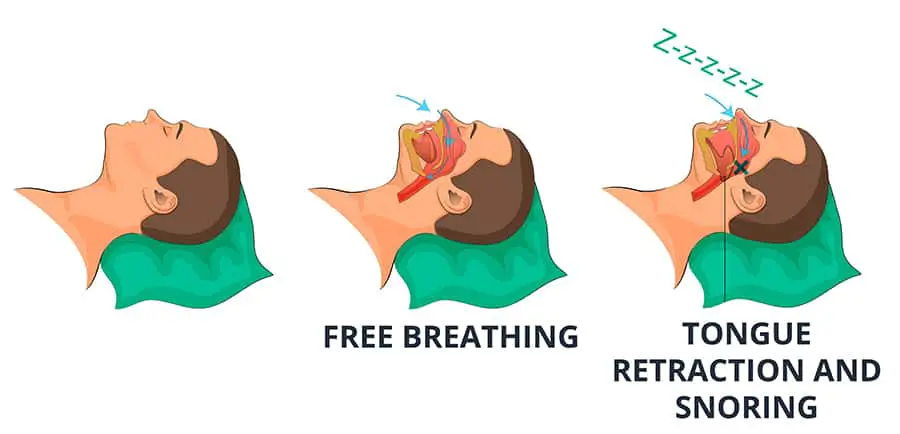
You can get the best results when you mew consistently. However, you might be wondering, “Is it possible to mew in your sleep?”
Yes, it is possible to mew while you sleep, though perhaps not for all stages of the sleep cycle. It is a great way to encourage faster results because the more often you correct your tongue posture, the quicker your results will appear. You can mew while sleeping by adjusting the way you sleep.
Why Should I Mew While Sleeping?
But why is it important to mew while you sleep in the first place? Mewing while you sleep helps you have consistent pressure on the bones, promoting bone remodeling. When it comes to moving bone, the duration is what matters, not force.
Dr. Mike Mew said that if you want to get dramatic mewing results, even as an adult, you need to find a way to mew 24/7.
If you want to mew longer each day, then mewing while you sleep easily adds more hours to your total mewing time.
Mewing while you sleep can help speed up your results. While you may not always be able to place pressure on your palate while you sleep, you can still correct your tongue posture and avoid becoming a mouth breather.
Additionally, mewing still has tons of health benefits, especially for sleep. If you sleep with your mouth open, it can lead to snoring and sleep apnea. When you correct your tongue posture and keep your mouth shut, especially when you sleep, you can decrease snoring and treat sleep apnea. Plus, you decrease stress by breathing through your nose.
This study shows that people with obstructive sleep apnea usually breathe orally and oro-nasally (Koutsourelakis et al., 2006). Therefore, sleeping with the right tongue posture and your mouth shut can help you breathe nasally, helping you deal with sleep apnea.

Tape Your Mouth
Start by putting tape on your mouth. This will prevent you from ever mouth-breathing while you sleep. Mouth taping is simple.
- Apply petroleum jelly to your lips to avoid them from drying out.
- Apply surgical tape over your mouth.
This won’t make you a master mewer in your sleep, but it’ll get you going in the right direction. You should never mouth-breathe to begin with, so get used to it.
Practice Daily
Firstly, you need to get used to mewing while you are awake. If you consciously mew as often as possible while you are awake, there is a good chance your tongue will try to stay that way while you are asleep. It will become automatic.
Some people mew so often that they adjust their tongue posture the second they wake up. It is all a matter of habit. However, you may not mew perfectly while you are asleep.
Keep in mind that your body relaxes while you sleep, so there may not be pressure on your palate. However, it does encourage proper tongue posture while you sleep, which can help decrease mouth breathing. Therefore, you will still get the other benefits of mewing while you sleep.
While it is possible to correct your tongue posture while you sleep, it is not easy. Even people who mew for a long time still struggle to mew while they sleep. If you tried mewing for a long time and still struggle to mew while you sleep, move to the next steps.
Sleep on Your Side
Some people can correct their tongue posture by sleeping on their side. Sleeping on your back, particularly with lots of pillows or an uneven back (more on that later), can pull your tongue back, leading to tongue breathing and improper tongue posture.
If you think that a side sleeping position is not enough, you can try to enhance it. For instance, if your mouth struggles to remain shut while you sleep, you can hug an elongated pillow. If the pillow lightly pushes on your chin, it can help you keep your mouth closed.

You can mimic the position shown in the photo above. Just keep the pillow closer to your chin.
However, some people worry that they may get facial asymmetry from sleeping on one side of their face. Try to switch sides every night (or when you wake up in your sleep, switch sides). It could help avoid facial asymmetry by applying even balance to your face.
One theory of how our ancestors slept is that they rolled from side to side, ensuring that both sides were slept on equally.
Get a Flatter Pillow
As mentioned earlier, sleeping on your back with many pillows can lead to mouth breathing and improper tongue posture. When you keep your head in a high upright position, it can constrict your airways.
It can be hard to breathe when you sleep with tons of pillows, so you end up mouth breathing in your sleep. When you breathe from your mouth, you get a lousy tongue posture.
Getting a flatter pillow can fix that. If you cannot get a flat pillow, you could fold a soft towel and use that as a pillow. If you do not want any rough fibers to ruin your skin, you could opt for a microfiber towel or a soft blanket.
Sleeping on the Floor
The issue with most mattresses is when you use them too much. Depending on your mattress, it tends to sink on the heavier parts of your body. The most common places it would sink are your chest, stomach, buttocks, etc.
When your mattress sinks or is too soft, and you sleep on your back, you end up in a hunchback position. It can misalign your spine and can affect your overall posture.
Therefore, sleeping on the floor might be better for you, especially if you use a flat pillow. It offers better support for your head, helping keep your tongue on your palate while you sleep.
However, sleeping on the floor will not be desirable for many people. Additionally, if you suffer from chronic lower back pain, it might be a problem as well.
Therefore, opting for a new firm mattress can help decrease pain (Kovac et al., 2003). It can help encourage better posture while reducing the pain you get from sleeping. Ideally, you should get a medium-firm mattress and use a flat pillow.

Sleep on Your Back
Some people can mew easily if they sleep on their back, particularly with the right mattress and a flat pillow. It is a great way to sleep if you worry about facial asymmetry from sleeping on your side.
If you still feel like your posture is not right when you sleep, you can add cushions. You can put a pillow or a folded blanket under your knees. It will help keep your head aligned with your spine and keep the natural curve of your spine.
However, you need to add more pillows or blankets if you have an extreme forward head posture. As your head posture improves, slowly decrease the height of your pillows or blanket. That way, you can gradually encourage better head posture without relying on putting cushions under your knees.
Here is how you can sleep on your back with cushions under your knees.

Why Is It Hard for Me to Mew While Sleeping?
Firstly, you may not be used to it. As mentioned earlier, people who are new to mewing may find it hard to mew in their sleep.
Practice makes perfect – try to mew more during the day and follow the tips above. Eventually, you should be able to correct your tongue posture in your sleep.
It could also be hard to mew while you sleep because you have a narrow palate. If your palate is narrow, you may already struggle or find it impossible to mew while awake.
If this is the case, then you would be better off getting a palate expander first. A palate expander will expand your palate, so there is enough room on your palate for your tongue. You can practice mewing in your sleep after you remove your palate expander.

